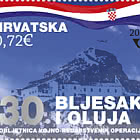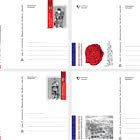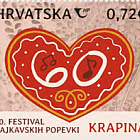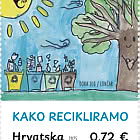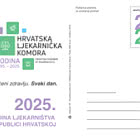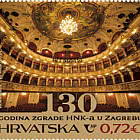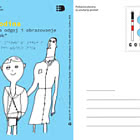Painter, graphic artist, stage designer, art educator, art historian and critic, museologist and writer - Ljubo Babić was one of the central characters of Croatian modern culture. Still as a high school student in Zagreb he began to attend art school of Menci Clement Crnčić and Bela Čikoš Sesija. In 1907 he becomes a student of the temporary High School for Arts and Crafts and in 1910 leaves Zagreb to study in Munich where at the Academy of Fine Arts he at first attends the drawing class of Angelo Jank, and later the painting class of Franz von Stuck. After return to Zagreb he opens a private painting school, and in 1916 becomes the first assistant teacher at the Zagreb High School for Arts and Crafts, today’s Academy of Fine Arts and starts his exceptionally influential educator’s work. In that same year he participates in the founding of the Croatian Spring Salon - the most important art exhibition of the time, marked by his works with the characteristics of art deco style and his personal kind of expressionism. In 1919 he is the author of the first exhibition of the Modern Gallery. In the 1920ies he intensively cooperates with Branko Gavella on a series of anthological theatre performances creating settings with avant-garde features. His works in painting at that time are in tune with the prevailing neorealistic tendency of Croatian painting. In 1929 he founds together with Vladimir Becić and Jerolim Miše the Group of Three and starts to theoretically develop the idea about „our artistic expression” as an important part of national cultural identity. Exactly in the colourist approach based on regionalism and in finding incentives in folk heritage, Babić tries to articulate „our expession” also on practical level. In 1950 he becomes a regular member of the Yugoslav Academy of Arts (JAZU). Retrospective exhibitions of his works were organised in 1960, 1974 and 2010.
Black Flag from 1916 is among the key works of his opus but also of Croatian modern art. The motif of flag was particularly important to him and took often prominent position in his works. This picture depicts the view from his atelier window at Mesnička Street in Zagreb, on the day of the death of the Emperor Franz Joseph. Black flag is the main protagonist of the scene. Positioned in the first plan in front of the cold grey-blue sky it determines the composition and dominates over small groups of sketched passersby. Precisely in this picture the basic elements of the author’s specific expressionist method are present: pronounced scenery, contrasting masses of light and an inclination to summarised presentation. Therefore, the Black Flag by Ljubo Babić is rightfully considered an anthological work of Croatian expressionism.
Čikoš abandoned military vocation in order to dedicate himself to art. Between 1887 and 1892 he studied art at the Vienna Academy whereupon he specialised at the Academy of Fine Arts in Munich in the classes of professor Wilhelm Lindenschmit and Carl von Marr. In 1893 he undertakes a study trip to Italy where he paints a series of very successful sceneries with architecture. Izidor Kršnjavi selects him as one of the younger artists to participate in furnishings and decoration of the palace of the Department for Divine Worship and Teaching in Opatička Street 10 in Zagreb. Thus, Čikoš creates works for the Pompeii Room (antique mythological themes), Renaissance Room (symbolist cycle of compositions with themes from Homer’s, Shakespeare’s, Dante’s and Goethe’s literary works) and also for the Golden Hall (representative historic composition of Baptism of Croats). For the Millennium Exhibition in Budapest in 1896 he makes a watercolour cycle of ruins of old Croatian towns. In 1898 he participates at the famous Croatian Salon exhibition in Zagreb. Together with Menci Clement Crnčić he opens a private art school in 1903. In 1907 Čikoš participates in founding of the Temporary High School for Arts and Crafts in Zagreb, today’s Academy of Fine Arts, where he was active until his death. In his entire creative work an exceptional interest for classic and Biblical themes and motifs which he interpreted with emphasized symbolism and echoes of the art-deco stylistic is noticeable. He belongs to those who introduced much more liberal presentation of the nude female body in Croatian painting.
The art historian Grgo Gamulin noted that „Sappho from1908 is the deepest and best balanced piece of art by Čikoš from that time”. After the study trip to United States of America in 1902, Čikoš inclined more to traditional ways of academic lecturing, which also resulted in a change in his own artistic approach. At that time Čikoš often repeats certain motifs, first of all the nude female bodies - e.g. he painted the motif of Salome in about twenty variations. He also painted Sappho - the ancient Greek poetess from the island of Lesbos - several times (one of the depictions can be seen on the wall of the Pompeii Room in Opatička 10), while this picture from the Modern Gallery can be perceived as a kind of summary of his entire work: here again is an antique motif accentuated with elements of content and painted with symbolist intention unified with indisputable academic knowledge and balance.









